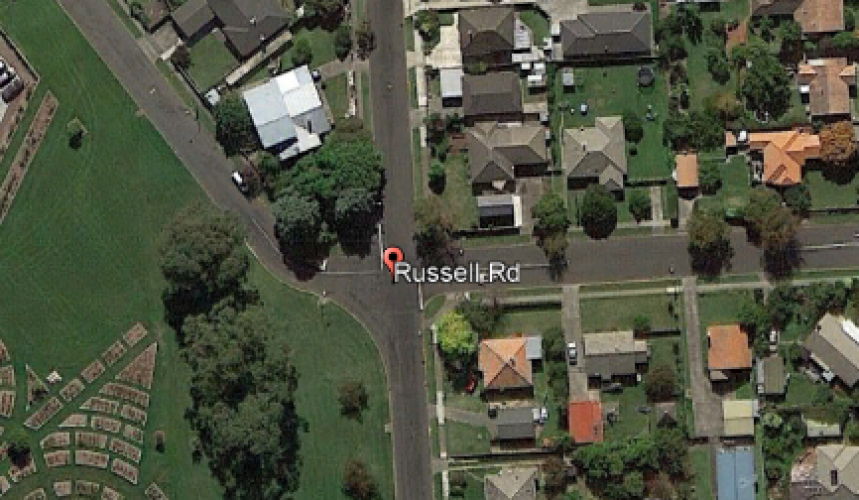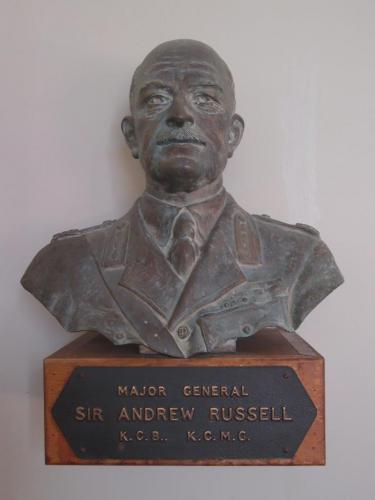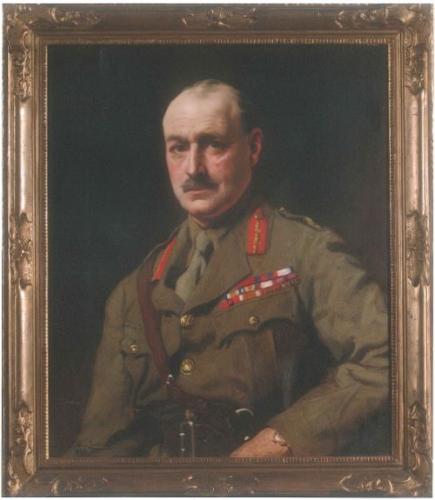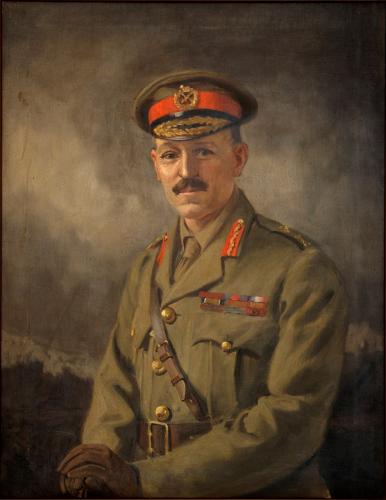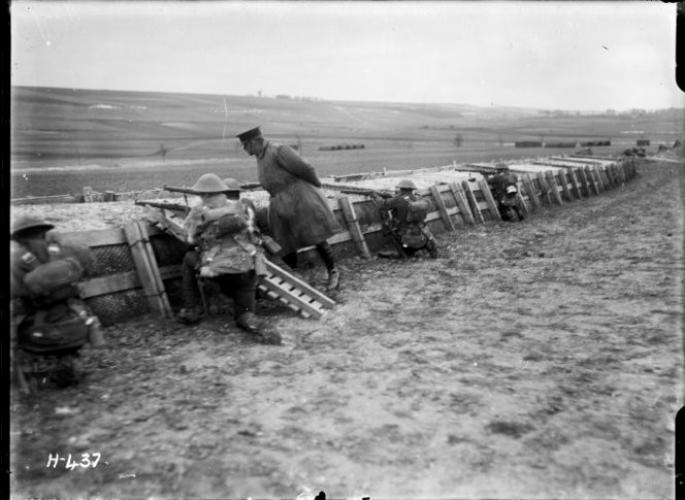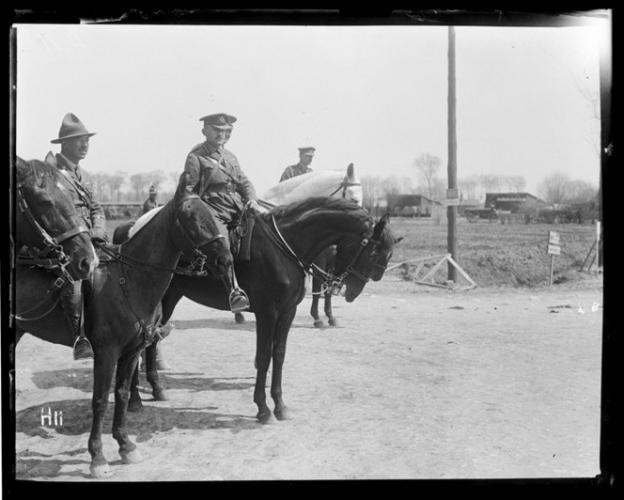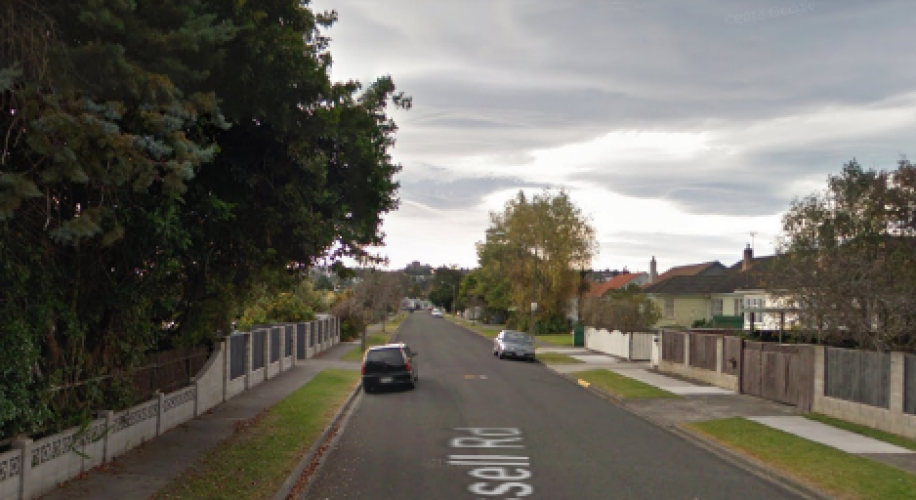Reason for the name
This Russell Road along with Russell Place in Marewa is named in honour of Major General Sir Andrew (Guy) Hamilton Russell.
This story has been put together with oversight and assistance from family members of Sir Andrew Russell. The story was originally written for 021 Russell Street in Hastings and will be repeated for the many other Russell Street “Poppy Places” throughout New Zealand.
Russell Road Marewa Napier is a long residential road in the suburb.
Author: Cherie Flintoff and the family of General Russell
Major General Sir Andrew Russell earned a high reputation for his tactical skills, insistence on strict discipline, care for his men and his personal courage. Under his leadership the N.Z. force was regarded as one of the finest in the allied army and fought with distinction in the major battles of WW 1, Messines, Passchendaele and the Battle of the Somme. His contribution was recognised with decoration from France, Belgium, Serbia and Montenegro as well as Britain. On returning to N.Z after the war he was given a hero’s welcome at Wellington where he was hailed in Maori “Ariki Toa” -the fighting chief sent forward to lead.
Andrew Hamilton Russell, known to his family and friends as Guy, was born in Napier in 1868. His father Colonel A.H. Russell, having come to N.Z as a soldier, left the army to take up farming in Hawke’s Bay. The early childhood was spent at Redclyffe, near the Tutaekuri River west of Taradale. His education was in England at Twyford preparatory school and Harrow.
From Harrow, Guy went to the Royal Military College, Sandhurst where he entered as the cadet with second highest marks. He left a year later in 1887, with the Sword of Honour awarded to the top cadet of the year. Five years of service with the British Army serving in India and Burma in the 1st Border Regiment with the rank of Lieutenant followed, after which Guy resigned his commission and returned to N.Z.
He followed his love of farming as a cadet, then manager and finally owner on the family land at Twyford and Tuna Nui (near Sherenden). In 1896 he married Gertrude Williams, the daughter of J.N. Williams of Frimley. Together they raised a family of two sons and three daughters. In 1912/13 they built the Homestead at Tuna Nui, designed by the architect C.T. Natusch.
Throughout these years Guy maintained a strong interest in military and defence affairs. From 1900 he was a territorial officer in the New Zealand Army. He raised the Hawke’s Bay Mounted Rifles, a volunteer force, and was promoted to Major under the volunteer system. The Defence Act of 1909 brought in a Territorial system, the rapid expansion of the N.Z. Defence Force, and compulsory Military training. The Wellington Mounted Rifles Brigade was formed in 1911 and Guy was given command with the rank of Colonel. In 1914 on outbreak of war, the N Z Mounted Rifles Brigade was formed and sailed for Egypt with Guy in command. While the horses came with them from New Zealand, the Mounted Rifles Brigade, without their horses, landed on the Gallipoli Peninsula on 12 May 1915 where Russell served with distinction. Only four horses returned to New Zealand this is a link to a sad poem and a song, The Last Parade, by the Australian poet Banjo Paterson.
Noted New Zealand military historian, Christopher Pugsley, writes
"...Russell took over the northern sector of the ANZAC perimeter, establishing his headquarters on the plateau that later became known as Russell's Top. His troops seized the foothills below Chunuk Bair on the night of 6–7 August and opened the way for an infantry advance, which was one of the most brilliant feats of the campaign. Russell later commanded his exhausted and depleted brigade in the unsuccessful attacks on Hill 60 at the end of August. After this offensive Sir Ian Hamilton, who commanded the Mediterranean Expeditionary Force, considered Russell the outstanding New Zealander on the peninsula.”
Sir Andrew Russell’s abilities were such that he was put in charge of the ANZAC Rear Guard during the final 48 hours of the highly successful evacuation from Gallipoli. The evacuation was meticulously planned to create the impression of ongoing work and reinforcements arriving even while evacuation was underway by night. The final 20,000 troops were withdrawn by ships over two nights, with diversions in place such as self-firing rifles (rigged with water dripping from one tin into another to pull the trigger) to ensure the Turks didn’t move up and attack the troops in their vulnerable embarkation points. The only casualty was a slight wound by a stray bullet through a rifleman’s ear. Following this campaign Sir Andrew Russell was awarded the K.C.M.G., promoted to the rank of Major General, and made commander of the N.Z. Division which was sent to fight in France and Belgium under overall British Command.
By the end of the war, Pugsley writes
"...Russell fought his New Zealand Division with consummate skill. He insisted on subordinates using every opportunity to learn lessons from each operation, and anticipation and planning remained his hallmark. Messines had shown his mastery of the set-piece attack, and the battles of 1918 showed his mastery of the advance and encounter battle... Russell was one of the few generals in the British armies to display innovation and tactical skill in the First World War. He brought to his command the practical experience of a working farm manager combined with an understanding of men, and a broad study of military history and tactics. Thinking things through was one of his strengths and his range of interests gave him the ability always to see the bigger picture. He was widely read, fluent in French... an enthusiastic cellist, an opera lover, and a brilliant conversationalist. Despite these gifts, Russell, a man of strong Anglican religious convictions, was self-effacing and modest...”
With the war over Guy returned to N.Z to his family and farm and to recover his health. His concern for the welfare of his men and their rehabilitation into a civilian and peacetime world was ongoing. His work with the R.S.A., of which he was President from 1921 – 1924 and again from 1927 – 1935, was largely to this end.
Civilian life was busy not only with his own farming business but also the wide variety of organisations he was involved with, which show the breadth of his interests, and indicate the esteem in which he was held. He was a founding member of the Round Table in N.Z., member of the Rhodes Scholarship Selection Committee, Board member of The Hawke’s Bay Farmers’ Co-operative Association of Barraud and Abraham, and of Flock House agricultural training establishment. He belonged to the British Empire Service League, the international charity Toc H, The British Israel World Federation and The Farmers Union to name a few. In WW2 he was Inspector General of Troops from 1940 - 1941, and a member of the War Council.
A man of high intellect and a dedicated family man with strong Christian beliefs and firm principles Sir Andrew Russell stands as an example to all who follow.
He died at Tunanui in 1960 at the age of 92 and was farewelled with a full Military funeral at St Matthews's Anglican Church in the city of Hastings.
Honours and Awards
Russell's military achievements were recognised with a KCMG in 1916 and, in 1917, a KCB. He was awarded the French Légion d'honneur (croix d'officier) and Croix de guerre (avec palme), the Belgian Ordre de Léopold (commander) and Croix de Guerre, the Serbian Order of the White Eagle (first class) and the Montenegrin Order of Danilo. He was nine times mentioned in British dispatches.
List of honours:
• Knight Commander of the Order of the Bath
• Knight Commander of the Order of St Michael and St George
• 1914-15 Star
• British War Medal 1914-19
• Victory Medal with Mention in Despatches (9 times)
• King George VI Silver Jubilee Medal
• King George VI Silver Coronation Medal
• Knight Commander of the Order of Danilo (Montenegro)
• Knight Commander de la Order of Leopold (Belgium)
• Officier de la Légion d'Honneur (France)
• Grand Cross of the Order of the White Eagle (with Swords) (Serbia)
• Croix de Guerre (Belgium)
• Croix de Guerre (France)


